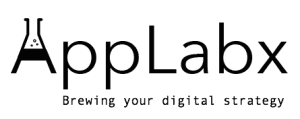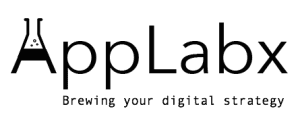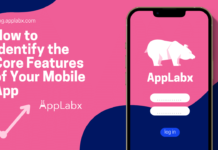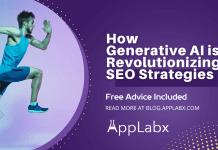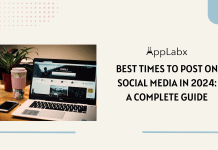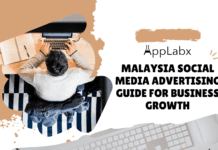Key Takeaways
- AI agents automate predictive analytics, enabling faster, more accurate forecasting and smarter strategic decisions.
- Businesses across industries are leveraging AI to reduce risks, optimize operations, and personalize customer experiences.
- Implementing AI-powered analytics enhances agility, improves ROI, and prepares organizations for a data-driven future.
In today’s data-driven economy, businesses are increasingly turning to advanced technologies to gain a competitive edge, optimize operations, and anticipate market trends with precision. Among these technologies, Artificial Intelligence (AI) agents have emerged as powerful tools that are transforming how organizations approach predictive analytics and long-term strategy formulation. As industries face ever-growing volumes of complex data, the ability to extract actionable insights from that data in real time has become not only a competitive advantage but a fundamental necessity.

Predictive analytics, which involves using historical data, statistical algorithms, and machine learning techniques to forecast future outcomes, is not a new concept. However, what has changed is the sheer scale, speed, and sophistication with which it can now be applied—thanks to the integration of AI agents. These autonomous, intelligent systems are designed to continuously learn from data, adapt to new information, and make proactive decisions with minimal human intervention. When applied effectively, they serve as the analytical engine behind smarter, faster, and more accurate business strategies.
Businesses today are navigating increasingly dynamic environments. From shifting consumer preferences and supply chain disruptions to regulatory changes and global market volatility, organizations must be agile and responsive. AI agents enable this agility by automating the identification of patterns and anomalies, offering real-time forecasting, and delivering predictive insights that are deeply contextualized and industry-specific. This means leaders can anticipate customer needs, prevent risks, allocate resources more efficiently, and seize opportunities before the competition does.
For example, a retail company can leverage AI-powered predictive analytics to forecast demand for specific products based on seasonal trends, social media sentiment, and purchasing behavior. Financial institutions can detect potential fraud or credit risks by analyzing transactional data streams in real time. Healthcare providers can predict patient outcomes and prevent complications by evaluating electronic health records and treatment data. Across industries, the common thread is clear: AI agents are redefining how businesses think, plan, and execute.
Moreover, the fusion of AI agents with predictive analytics is democratizing access to sophisticated insights. Businesses no longer need large, in-house data science teams to extract value from their data. With the rise of user-friendly platforms powered by AI, even small and medium-sized enterprises (SMEs) can implement predictive models, conduct scenario analyses, and optimize their operations with data-backed confidence.
However, adopting this powerful combination is not without its challenges. Data quality, ethical concerns, integration with legacy systems, and the need for strategic change management are all critical factors that can determine the success of AI-driven initiatives. Yet, the potential rewards—greater operational efficiency, enhanced customer satisfaction, improved financial performance, and more resilient decision-making—far outweigh the risks.
This blog explores how AI agents are revolutionizing predictive analytics and reshaping the landscape of business strategy in 2025 and beyond. From understanding the core functionalities of AI agents to uncovering real-world applications across industries, we’ll delve deep into the mechanisms, benefits, and future potential of this technological synergy. Whether you’re a business leader, strategist, data scientist, or tech enthusiast, this comprehensive guide will illuminate the transformative power of AI-powered predictive analytics and why it’s essential for building smarter, more adaptive business strategies.
But, before we venture further, we like to share who we are and what we do.
About AppLabx
From developing a solid marketing plan to creating compelling content, optimizing for search engines, leveraging social media, and utilizing paid advertising, AppLabx offers a comprehensive suite of digital marketing services designed to drive growth and profitability for your business.
AppLabx is well known for helping companies and startups create world-class AI agents.
At AppLabx, we understand that no two businesses are alike. That’s why we take a personalized approach to every project, working closely with our clients to understand their unique needs and goals, and developing customized strategies to help them achieve success.
If you need a digital consultation, then send in an inquiry here.
How AI Agents Are Powering Predictive Analytics for Smarter Business Strategies
- What Are AI Agents and How Do They Work in Predictive Analytics?
- The Role of Predictive Analytics in Modern Business Strategy
- How AI Agents Enhance Predictive Analytics
- Top Industries Using AI-Powered Predictive Analytics
- Benefits of Using AI Agents for Business Intelligence
- Challenges and Limitations
- Future Outlook: The Evolving Role of AI in Predictive Strategy
- How to Implement AI-Powered Predictive Analytics in Your Business
1. What Are AI Agents and How Do They Work in Predictive Analytics?
AI agents are increasingly becoming the core drivers behind the evolution of predictive analytics, enabling businesses to automate complex forecasting, make data-informed decisions, and respond to emerging trends with unparalleled speed and precision. This section unpacks what AI agents are, how they function, and the critical role they play in modern predictive analytics frameworks.
Understanding AI Agents: Definition and Characteristics
AI agents are autonomous software systems capable of perceiving their environment, processing data, and making decisions to achieve specific goals without continuous human intervention.
Key characteristics:
- Autonomy: Operate independently with minimal human input.
- Adaptability: Learn from data and improve over time.
- Goal-oriented behavior: Act purposefully to optimize outcomes.
- Real-time processing: Analyze data as it arrives.
- Interaction capability: Can communicate with users, systems, or other agents.
Types of AI Agents commonly used in business:
| Type | Description | Example Use Case |
|---|---|---|
| Reactive Agents | Respond to specific stimuli without internal memory | Customer service bots responding to FAQs |
| Model-Based Agents | Use internal models of the world to inform decisions | Inventory management systems |
| Goal-Based Agents | Make decisions based on a defined objective | AI for predictive marketing campaign planning |
| Learning Agents | Improve performance through data and experience | AI recommending investment portfolios |
How AI Agents Function in Predictive Analytics
AI agents enhance predictive analytics by automating data handling, model building, and outcome forecasting.
Core Functions of AI Agents in Predictive Analytics:
- Data Collection and Ingestion
- Aggregate structured and unstructured data from multiple sources.
- Integrate APIs, IoT sensors, CRMs, ERPs, and external datasets.
- Preprocessing and Feature Engineering
- Clean, normalize, and transform data for modeling.
- Identify relevant variables (features) for prediction.
- Model Selection and Training
- Choose appropriate statistical or machine learning models (e.g., regression, random forests, neural networks).
- Continuously train and retrain models with new data inputs.
- Real-Time Forecasting and Decision-Making
- Deliver insights using predictive scores and probabilities.
- Make autonomous decisions based on prediction thresholds.
- Feedback Loop and Continuous Learning
- Monitor accuracy and model drift.
- Update predictions as new data and outcomes emerge.
Key Technologies Enabling AI-Powered Predictive Analytics
| Technology | Role in Predictive Analytics | Example Tools/Platforms |
|---|---|---|
| Machine Learning | Powers pattern recognition and forecasting | TensorFlow, Scikit-learn, PyTorch |
| Natural Language Processing (NLP) | Extracts insights from text data | spaCy, OpenAI APIs, AWS Comprehend |
| Robotic Process Automation (RPA) | Automates repetitive data tasks | UiPath, Automation Anywhere |
| Knowledge Graphs | Models relationships between data points | Neo4j, Microsoft Azure Knowledge Graph |
| Edge Computing | Enables localized real-time analysis | NVIDIA Jetson, AWS Greengrass |
Real-World Applications of AI Agents in Predictive Analytics
1. Retail
- AI agents forecast demand based on sales trends, weather, social signals.
- Example: Walmart uses AI to optimize product restocking in real-time.
2. Finance
- Predict credit risk, detect fraud, and forecast asset performance.
- Example: JPMorgan Chase uses AI for anomaly detection in transactions.
3. Healthcare
- Predict patient deterioration, readmission risks, and treatment outcomes.
- Example: Mount Sinai uses predictive AI to anticipate emergency room surges.
4. Manufacturing
- Predict equipment failure using sensor data and AI monitoring.
- Example: Siemens uses AI agents to optimize predictive maintenance.
5. Marketing
- Forecast campaign effectiveness, lead conversion likelihood.
- Example: HubSpot integrates AI agents for automated lead scoring and predictions.
Benefits of AI Agents in Predictive Analytics
| Benefit | Description |
|---|---|
| Speed and Efficiency | AI agents process vast data in real-time, far faster than human analysts |
| Accuracy and Precision | Machine learning improves prediction accuracy over time |
| Scalability | AI agents can handle increasing data complexity and volume effortlessly |
| Proactive Decision-Making | Businesses act on forecasts before issues arise |
| Reduced Costs | Automated analytics reduce the need for large analyst teams |
AI Agents vs Traditional Analytics: A Comparison Matrix
| Feature | Traditional Analytics | AI-Powered Predictive Analytics |
|---|---|---|
| Data Processing Speed | Manual or batch-based | Real-time and automated |
| Learning and Adaptation | Static models | Self-learning models |
| Decision Autonomy | Human-driven | Autonomous, AI-guided |
| Scalability | Limited by human capacity | Highly scalable |
| Forecast Accuracy | Rule-based, limited flexibility | Context-aware, high precision |
| Cost of Operation | High (manual labor-intensive) | Lower with automation |
Visual Workflow: How AI Agents Power Predictive Analytics
flowchart TD
A[Data Sources: CRM, IoT, ERP, Web] --> B[AI Agent Ingestion Layer]
B --> C[Data Preprocessing & Feature Engineering]
C --> D[Model Training and Selection]
D --> E[Prediction Generation]
E --> F[Actionable Insights & Business Decisioning]
F --> G[Feedback Loop for Continuous Learning]
AI agents are no longer experimental technologies—they are the intelligence backbone of advanced predictive analytics systems. By automating data-driven predictions, continuously learning from feedback, and enabling real-time strategic decisions, they are redefining how businesses stay agile, innovative, and competitive in 2025 and beyond.
2. The Role of Predictive Analytics in Modern Business Strategy
Predictive analytics has become a cornerstone of modern business strategy. By leveraging historical data, statistical modeling, and machine learning algorithms, organizations can anticipate future events, mitigate risks, and make data-informed strategic decisions. This shift from reactive to proactive strategy development is enabling businesses to stay competitive, agile, and customer-focused in a rapidly evolving digital economy.
Why Predictive Analytics Matters in Strategic Planning
Predictive analytics provides clarity in uncertain environments, helping leaders make smarter decisions.
Key strategic advantages:
- Improved forecasting accuracy
- Helps anticipate trends in demand, revenue, costs, and customer behavior.
- Data-driven decision-making
- Minimizes guesswork and enhances strategic consistency across departments.
- Faster response to market shifts
- Enables real-time adaptation to changing customer needs or external disruptions.
- Competitive advantage
- Delivers insights that allow for earlier and better-informed decisions.
Core Use Cases of Predictive Analytics in Business Strategy
| Business Function | Predictive Analytics Use Case | Strategic Impact |
|---|---|---|
| Sales & Marketing | Lead scoring, campaign forecasting, churn prediction | More personalized outreach and higher conversion rates |
| Operations & Logistics | Inventory forecasting, supply chain risk modeling | Reduces costs, prevents stockouts or overstocking |
| Finance | Revenue forecasting, fraud detection, credit risk modeling | Improves financial planning and protects margins |
| Human Resources | Talent acquisition predictions, attrition risk analysis | Enhances retention and hiring accuracy |
| Customer Experience | Personalized recommendations, sentiment analysis | Increases engagement and loyalty |
Strategic Benefits Across the Business Lifecycle
1. Market Entry and Expansion
- Analyze historical trends and competitor data to forecast demand in new regions.
- Predict the success probability of launching new products based on similar past data.
2. Resource Allocation
- Use predictive models to identify high-ROI initiatives.
- Allocate marketing and R&D budgets based on forecasted performance.
3. Risk Management
- Detect operational risks, credit defaults, or supply disruptions in advance.
- Enable early intervention strategies to minimize damage.
4. Customer Strategy Optimization
- Predict lifetime value (CLV) of customers and optimize acquisition efforts.
- Anticipate churn and proactively improve customer satisfaction.
Examples of Predictive Analytics in Strategic Action
Retail Example:
- Amazon leverages predictive analytics to forecast demand at a granular level, allowing its fulfillment centers to pre-stock items based on predictive buying behavior.
Banking Example:
- HSBC uses predictive models to identify potential defaulters, allowing them to adjust credit limits and reduce financial risk exposure.
Healthcare Example:
- Mayo Clinic applies predictive analytics to identify patients at risk of complications, reducing readmissions and improving care plans.
Manufacturing Example:
- GE uses predictive maintenance models to anticipate equipment failures, reducing downtime and optimizing production schedules.
Predictive Analytics Strategy Matrix: From Insights to Execution
| Strategic Area | Key Predictive Inputs | Output Insights | Business Action |
|---|---|---|---|
| Product Development | User feedback, market trends, usage | Feature demand forecasts | Prioritize roadmap based on likely ROI |
| Sales Forecasting | CRM data, seasonal trends, external | Sales projections by region/product | Adjust goals, inventory, and salesforce coverage |
| Customer Retention | Transaction history, engagement score | Churn likelihood score | Trigger loyalty campaigns or upsell offers |
| Workforce Planning | Historical hiring data, performance | Turnover risk and hiring forecast | Plan recruitment cycles and training investment |
Visual Insight: Predictive Analytics Value Chain in Business Strategy
flowchart TD
A[Historical Data Sources: CRM, ERP, Web, Social Media] --> B[Data Preparation & Feature Engineering]
B --> C[Predictive Modeling & Machine Learning]
C --> D[Business Insight Generation]
D --> E[Strategic Planning & Decision Execution]
E --> F[Monitoring & Feedback Loop for Optimization]
Predictive Analytics vs. Traditional Analytics: Strategic Depth Comparison
| Feature | Traditional Analytics | Predictive Analytics |
|---|---|---|
| Time Horizon | Focuses on past and present | Focuses on future outcomes |
| Decision Support | Descriptive and diagnostic | Proactive and forward-looking |
| Level of Insight | Static reports | Dynamic forecasting |
| Agility | Limited response speed | Enables real-time adjustment |
| Competitive Differentiation | Basic insights shared across peers | Unique, custom insights for strategic edge |
Challenges to Integrating Predictive Analytics in Strategy
Despite its value, predictive analytics adoption requires overcoming several strategic challenges:
- Data Quality Issues
- Incomplete, inconsistent, or unstructured data can affect model accuracy.
- Organizational Silos
- Fragmented data ownership hinders centralized strategic alignment.
- Skill Gaps
- Lack of in-house data science talent can delay deployment.
- Integration Complexity
- Predictive models must align with existing systems and workflows.
- Cultural Resistance
- Stakeholders may distrust or undervalue automated forecasts.
Future Role of Predictive Analytics in Strategy
Emerging trends that will redefine predictive strategy:
- AI-Augmented Decision-Making: Real-time recommendation engines integrated into strategic dashboards.
- Predictive Governance Models: Boards and C-suites using predictive risk models in long-term planning.
- Hyper-Personalized Business Strategies: Leveraging AI to tailor strategic moves down to the individual user or region.
- Cross-Industry Benchmarking: Predictive tools comparing performance across sectors to suggest strategic pivots.
Predictive analytics is not merely a support tool—it is rapidly becoming the foundation for strategic agility, competitive foresight, and sustained growth. Organizations that embed predictive thinking into their core decision-making processes can move faster, plan smarter, and adapt with greater precision in an unpredictable world.
3. How AI Agents Enhance Predictive Analytics
AI agents are transforming the field of predictive analytics by introducing advanced automation, continuous learning, and real-time decision-making capabilities. By acting as intelligent intermediaries between vast datasets and predictive models, AI agents optimize every stage of the analytical process — from data ingestion and model training to forecast delivery and actionable insights. This section explores the specific ways in which AI agents enhance predictive analytics and create smarter, faster, and more adaptive systems.
Core Enhancements Brought by AI Agents
AI agents deliver significant upgrades to traditional predictive analytics platforms through automation, accuracy, and agility.
Key Enhancements:
- Real-Time Data Processing
- Continuously ingest and process data streams from IoT devices, CRM systems, and digital platforms.
- Enable live forecasting and dynamic model updates without manual intervention.
- Self-Learning and Model Optimization
- Use reinforcement learning and neural networks to refine predictions as new data becomes available.
- Eliminate the need for constant retraining by data scientists.
- Decision-Making Autonomy
- Execute rule-based and goal-oriented actions based on prediction outcomes.
- Automate responses like sending alerts, adjusting inventory, or rerouting logistics.
- Multi-Model Management
- Evaluate multiple predictive models simultaneously and select the most accurate in real time.
- Combine models through ensemble techniques for higher precision.
AI Agent-Driven Predictive Analytics Workflow
| Stage | Traditional Approach | AI Agent Enhancement |
|---|---|---|
| Data Ingestion | Manual or scheduled ETL pipelines | Autonomous, continuous data stream ingestion |
| Feature Engineering | Static and human-defined | Dynamic feature generation using deep learning |
| Model Selection | Requires data scientist input | AI agents auto-select best-fit models using scoring algorithms |
| Forecast Generation | Batch-based prediction | Real-time, on-demand forecasting |
| Action Execution | Human decision-making | Autonomous or semi-autonomous action execution |
Practical Examples of AI Agents in Action
1. E-Commerce:
- AI agents forecast purchase behavior by analyzing browsing patterns, cart abandonment, and seasonal trends.
- Example: Shopify uses AI-driven predictive models for product recommendations and dynamic pricing.
2. Transportation and Logistics:
- AI agents predict delivery delays using traffic data, weather, and vehicle conditions.
- Example: FedEx leverages predictive AI agents for route optimization and shipment risk alerts.
3. Insurance:
- AI agents detect fraud by analyzing anomalies in claim patterns and user behavior.
- Example: Lemonade uses AI agents to process claims in real-time and flag suspicious activities.
4. Energy Sector:
- AI agents predict equipment failure and optimize energy distribution using sensor data.
- Example: Siemens employs AI agents in smart grids to forecast energy demands and reduce downtime.
How AI Agents Improve Forecast Accuracy and Business Impact
| Enhancement Category | Benefit to Predictive Analytics | Example Use Case |
|---|---|---|
| Data Handling | Handle high-dimensional, unstructured data | Analyzing social media trends for brand sentiment |
| Prediction Precision | Reduce error rates with continuous learning | Forecasting credit defaults in finance |
| Scenario Simulation | Simulate “what-if” scenarios at scale | Modeling demand in multiple geographies simultaneously |
| Real-Time Responsiveness | Respond instantly to changes in data | Price surge predictions in ride-sharing platforms |
| User Personalization | Customize outputs per user profile | Healthcare treatment outcome forecasting |
AI-Enhanced Predictive Analytics: Capability Comparison Matrix
| Capability | Traditional Predictive Systems | AI Agent-Driven Systems |
|---|---|---|
| Data Volume Handling | Limited by system constraints | Scales to petabytes across multiple sources |
| Real-Time Adaptability | Delayed or batch predictions | Continuous live updates |
| Learning Capability | Requires manual retraining | Self-learning, adaptive models |
| Decision-Making | Human-led | Automated and goal-oriented |
| Integration with External Systems | Manual or static APIs | Dynamic, self-configuring integrations |
Visual Model: AI Agent Integration in Predictive Analytics
flowchart LR
A[Data Streams: CRM, IoT, Web, Sensors] --> B[AI Agent Layer]
B --> C[Dynamic Feature Engineering]
C --> D[Model Selection and Ensemble Learning]
D --> E[Predictive Forecast Generation]
E --> F[Automated Decision-Making]
F --> G[Execution Layer: Alerts, Actions, Reports]
G --> H[Continuous Feedback Loop]
H --> B
Advanced Capabilities Enabled by AI Agents in Predictive Analytics
1. Cognitive Forecasting
- Combine machine learning with NLP and reasoning for deep scenario insights.
- Example: LegalTech platforms use AI to forecast litigation outcomes based on historical rulings and legal language.
2. Behavioral Prediction
- Track micro-interactions to forecast individual or group behavior shifts.
- Example: Telcos use predictive AI agents to preempt churn based on customer engagement decline.
3. Autonomous Systems Optimization
- Optimize dynamic systems with minimal human input.
- Example: AI agents in autonomous vehicles predict pedestrian movement and traffic flow in real time.
Performance Gains Through AI-Enhanced Predictive Systems
| Metric | Without AI Agents | With AI Agents |
|---|---|---|
| Forecast Accuracy | 70–80% | 90–95% |
| Time to Insight | Hours to days | Seconds to minutes |
| Manual Model Updates | Every 30–90 days | Continuous learning loop |
| Operational Cost per Prediction | High (manual processing) | Low (automated execution) |
| Adaptability to New Variables | Rigid and manual | Dynamic and self-adaptive |
AI agents act as force multipliers in predictive analytics, automating the analytical lifecycle while enhancing speed, scale, and intelligence. By embedding these agents into business workflows, organizations can go beyond historical analysis and evolve into foresight-driven enterprises capable of anticipating change, managing risk, and unlocking unprecedented value from their data.
4. Top Industries Using AI-Powered Predictive Analytics
AI-powered predictive analytics is reshaping industries across the globe by enabling businesses to forecast future events, streamline operations, reduce risks, and deliver superior customer experiences. As sectors grapple with massive volumes of structured and unstructured data, predictive models powered by AI agents offer real-time, high-accuracy forecasts that drive smarter decisions. This section provides a deep dive into the industries leading the charge in adopting AI-powered predictive analytics, supported by practical examples, use cases, and performance matrices.
1. Retail and eCommerce
Key Applications:
- Demand forecasting
- Dynamic pricing optimization
- Inventory and supply chain management
- Personalized customer recommendations
Examples:
- Amazon: Uses AI to predict customer purchases before they happen through anticipatory shipping models.
- Zara: Applies predictive analytics to forecast fashion trends and optimize supply chain timelines.
Strategic Benefits:
- Reduce overstock and stockouts
- Maximize revenue per customer through personalization
- Predict and prevent cart abandonment
AI-Powered Retail Predictive Matrix:
| Function | AI Prediction Model | Outcome |
|---|---|---|
| Inventory Management | Time series forecasting | Balanced stock levels |
| Customer Behavior | Collaborative filtering + clustering | Increased conversion rates |
| Pricing Strategy | Dynamic regression models | Real-time pricing adjustments |
| Logistics | Route and delay prediction | Faster delivery times |
2. Financial Services
Key Applications:
- Credit risk assessment
- Fraud detection and prevention
- Investment forecasting
- Customer churn modeling
Examples:
- JPMorgan Chase: Leverages AI agents to detect fraud in real-time using anomaly detection.
- PayPal: Uses predictive models to identify potentially fraudulent transactions before approval.
Strategic Benefits:
- Improve loan underwriting accuracy
- Minimize financial loss due to fraud
- Tailor financial products to customer needs
AI in Finance Capability Matrix:
| Use Case | Model Used | Business Benefit |
|---|---|---|
| Credit Scoring | Logistic regression, SVM | Lower default rates |
| Fraud Detection | Deep learning, neural networks | Faster fraud mitigation |
| Wealth Management | Predictive asset modeling | Personalized portfolio recommendations |
| Churn Analysis | Decision trees, XGBoost | Increase customer retention |
3. Healthcare and Life Sciences
Key Applications:
- Patient outcome prediction
- Disease progression modeling
- Operational efficiency
- Personalized medicine
Examples:
- Mount Sinai Health System: Uses AI to predict sepsis risk and reduce ICU admissions.
- IBM Watson Health: Provides oncologists with AI-driven treatment recommendations.
Strategic Benefits:
- Enhance clinical decision-making
- Reduce hospital readmissions
- Improve patient experience and safety
Predictive Analytics in Healthcare Matrix:
| Application | Predictive Model Used | Strategic Impact |
|---|---|---|
| Patient Risk Scoring | Classification models | Early intervention and reduced mortality |
| Resource Allocation | Queuing and forecasting models | Optimized staff and equipment scheduling |
| Drug Discovery | Neural networks and simulations | Accelerated R&D and clinical trials |
| Treatment Personalization | Genomic data modeling | Higher treatment success rates |
4. Manufacturing and Industrial IoT
Key Applications:
- Predictive maintenance
- Quality control
- Supply chain forecasting
- Energy optimization
Examples:
- GE: Implements predictive maintenance using AI to monitor equipment health and prevent failures.
- Bosch: Applies machine learning to improve manufacturing yields and defect detection.
Strategic Benefits:
- Reduce downtime and unplanned outages
- Extend machinery lifespan
- Enhance productivity and cost savings
AI-Driven Manufacturing Matrix:
| Function | AI Technique | Strategic Outcome |
|---|---|---|
| Equipment Monitoring | Sensor data + ML regression | Reduced failure rates |
| Demand Forecasting | Ensemble time-series models | Efficient production planning |
| Defect Detection | Image recognition, deep learning | Higher product quality |
| Energy Usage Optimization | Reinforcement learning | Lower operational costs |
5. Telecommunications
Key Applications:
- Churn prediction
- Network optimization
- Usage behavior analysis
- Marketing campaign targeting
Examples:
- Verizon: Utilizes predictive AI models to detect service disruptions before customers are impacted.
- Vodafone: Applies churn prediction to proactively engage high-risk customers.
Strategic Benefits:
- Boost customer retention
- Enhance network performance
- Increase ARPU (Average Revenue Per User)
Telecom AI Predictive Use Case Table:
| Area | Predictive Model Type | Benefit to Strategy |
|---|---|---|
| Customer Churn | Decision trees, SVM | Targeted retention offers |
| Service Quality Monitoring | Time-series + anomaly detection | Preemptive maintenance and alerts |
| Usage Forecasting | ARIMA, LSTM networks | Infrastructure scaling and optimization |
| Campaign Effectiveness | Logistic regression, NLP | Higher ROI on marketing spend |
6. Transportation and Logistics
Key Applications:
- Route optimization
- Demand forecasting
- Fuel consumption prediction
- Maintenance scheduling
Examples:
- UPS: Uses predictive analytics to determine optimal delivery routes and reduce mileage.
- DHL: Applies AI to optimize supply chain logistics and warehousing.
Strategic Benefits:
- Lower transportation costs
- Improve customer delivery times
- Reduce environmental impact
Transportation Forecasting Table:
| Process | Predictive Algorithm | Resulting Efficiency |
|---|---|---|
| Route Planning | Geospatial clustering + heuristics | Reduced fuel consumption |
| Demand Estimation | Time-series forecasting | Balanced vehicle allocation |
| Maintenance Optimization | Predictive failure modeling | Fewer unexpected breakdowns |
| Fleet Management | Deep learning on telematics data | Maximized vehicle utilization |
7. Energy and Utilities
Key Applications:
- Load forecasting
- Smart grid optimization
- Outage prediction
- Renewable energy production planning
Examples:
- EDF Energy: Uses AI to predict energy demand surges and manage grid distribution.
- NextEra Energy: Applies predictive modeling to improve wind and solar energy forecasting.
Strategic Benefits:
- Improve grid reliability and efficiency
- Optimize energy storage and distribution
- Reduce carbon emissions
AI in Energy Sector Matrix:
| Focus Area | Predictive AI Model | Strategic Value |
|---|---|---|
| Load Forecasting | Hybrid deep learning + ARIMA | Balanced supply and demand |
| Equipment Failure Prediction | Sensor data + decision trees | Proactive repairs and safety |
| Energy Price Forecasting | Regression + external data inputs | Improved market trading strategies |
| Renewable Forecasting | Satellite + weather data modeling | Reliable green energy supply |
AI-powered predictive analytics is not limited to any one vertical; it is a horizontal transformation tool applicable across all major industries. The convergence of big data, cloud computing, and AI agents has made predictive analytics more accessible and scalable than ever before. As these sectors continue to digitize and automate, predictive capabilities will become central to strategic planning, customer engagement, operational resilience, and long-term profitability.
5. Benefits of Using AI Agents for Business Intelligence
AI agents are redefining the landscape of Business Intelligence (BI) by bringing automation, intelligence, and real-time capabilities to data analysis and decision-making. Unlike traditional BI tools that rely heavily on manual queries and static dashboards, AI agents autonomously analyze data, generate insights, and even trigger actions without human intervention. As a result, organizations that adopt AI-driven BI experience accelerated decision-making, enhanced accuracy, improved efficiency, and deeper strategic foresight.
1. Real-Time Data Analysis and Decision-Making
AI agents empower BI systems to analyze and act on data in real time, eliminating latency between data generation and insight delivery.
Key Benefits:
- Continuous monitoring of key performance indicators (KPIs)
- Immediate detection of anomalies or trend changes
- Proactive alerts and recommendations
Examples:
- Netflix uses AI agents to monitor viewer behavior in real-time and recommend content instantly.
- Visa employs AI-powered BI to detect fraudulent transactions as they occur.
Real-Time vs Traditional BI Matrix:
| Feature | Traditional BI | AI Agent-Driven BI |
|---|---|---|
| Insight Delivery Time | Minutes to days | Milliseconds to seconds |
| Response to Anomalies | Manual review required | Immediate alerts and auto-responses |
| Decision Support Speed | Slow and retrospective | Real-time and predictive |
| Adaptability | Static dashboards | Dynamic and continuously evolving |
2. Enhanced Forecast Accuracy and Predictive Capabilities
AI agents use advanced algorithms and machine learning models to identify patterns and forecast future trends more accurately.
Key Benefits:
- Improved accuracy of sales, demand, and financial forecasts
- Reduced business risk through proactive planning
- Ability to model multiple scenarios and outcomes
Examples:
- Coca-Cola uses AI-driven predictive BI to forecast sales demand across regions.
- Uber leverages AI agents to anticipate ride demand and adjust pricing dynamically.
Forecasting Accuracy Comparison Table:
| Method | Average Forecast Accuracy |
|---|---|
| Manual Analyst Estimates | 65–70% |
| Traditional BI with Rules | 75–80% |
| AI-Powered Predictive Models | 90–95% |
3. Autonomous Decision Execution
AI agents go beyond insight delivery by autonomously executing predefined decisions based on BI findings.
Key Benefits:
- Reduced human workload and operational delays
- Scalable decision-making across departments
- Consistent action triggered by data thresholds
Examples:
- Alibaba uses AI to automatically reorder inventory based on demand forecasts.
- LinkedIn applies AI agents to adjust ad bidding strategies in real time.
AI Decision Execution Process:
| Step | Action Taken by AI Agent |
|---|---|
| Detects Trend Shift | Identifies drop in product sales |
| Analyzes Root Cause | Correlates to competitor discounting |
| Recommends Action | Suggests temporary price adjustment |
| Executes Strategy | Automatically applies discount in the CRM |
| Monitors Outcome | Tracks performance and adjusts if needed |
4. Data Democratization and Accessibility
AI agents make business intelligence accessible to non-technical users by simplifying complex analysis and automating data discovery.
Key Benefits:
- No need for SQL or data modeling expertise
- Natural language processing (NLP) for querying data
- Personalized dashboards and alerts based on user roles
Examples:
- Tableau with Einstein AI allows business users to ask questions in plain English and receive instant data visualizations.
- Qlik Sense uses AI agents to suggest new insights and patterns that users might overlook.
User Accessibility Matrix:
| Role | Traditional BI Experience | AI Agent-Enhanced BI Experience |
|---|---|---|
| C-Suite Executive | Waits for analyst reports | Direct voice- or text-based insights |
| Marketing Manager | Views fixed dashboards | Receives automated campaign insights |
| Sales Leader | Manually filters CRM data | Gets predictive lead scoring suggestions |
| Operations Analyst | Writes queries or relies on IT | Uses AI-driven exploration tools |
5. Reduced Operational Costs and Increased Efficiency
AI agents automate repetitive analytical tasks, freeing up resources and lowering operational expenses.
Key Benefits:
- Minimized reliance on large data analyst teams
- Reduced reporting errors and time
- Lower IT support costs for BI maintenance
Examples:
- Procter & Gamble achieved significant reporting efficiency gains by deploying AI agents across its BI ecosystem.
- Shell uses AI to automate safety audits and compliance reporting.
6. Strategic Agility and Faster Market Response
AI agents enable organizations to act on trends, customer behaviors, and risks much faster than traditional BI methods.
Key Benefits:
- Accelerated go-to-market strategies
- Rapid response to competitor moves
- Agile resource allocation and strategic pivoting
Examples:
- Nike uses AI-powered BI to rapidly adapt product lines based on social sentiment and purchasing trends.
- Airbnb employs AI agents to optimize listing prices daily based on demand forecasts and local events.
Strategic Agility Metrics:
| Response Metric | Without AI Agents | With AI Agents |
|---|---|---|
| Time to Market Change | Weeks | Hours to Days |
| Resource Allocation Decision Time | Days | Real-time or same day |
| Competitor Reaction Time | Delayed | Predictive and proactive |
7. Improved Data Governance and Compliance
AI agents help ensure data quality, monitor compliance standards, and detect anomalies in data usage or reporting.
Key Benefits:
- Automated data lineage and audit trails
- Continuous compliance monitoring (e.g., GDPR, HIPAA)
- Reduced risk of regulatory penalties
Examples:
- Salesforce integrates AI agents to ensure data integrity across customer records.
- HSBC uses AI for compliance monitoring in financial transactions and reporting.
Data Governance Use Case Table:
| Compliance Focus | AI Agent Functionality | Benefit Delivered |
|---|---|---|
| GDPR Data Access | Tracks who accessed what data and when | Ensures legal data transparency |
| HIPAA in Healthcare | Flags potential patient data exposure | Mitigates data privacy violations |
| Financial Regulations | Monitors anomalies in reporting formats | Reduces regulatory risk and fines |
8. Continuous Improvement via Feedback Loops
AI agents continuously learn from outcomes and feedback to improve the accuracy and efficiency of BI insights.
Key Benefits:
- Self-correcting models that evolve over time
- Increased accuracy of recommendations
- Ongoing optimization of business strategies
Examples:
- Spotify refines its recommendation engine by continuously analyzing user feedback and engagement.
- Zillow enhances real estate pricing models using feedback from actual transaction closings.
Feedback Loop Architecture Chart:
flowchart LR
A[User or System Action] --> B[AI Agent Analysis]
B --> C[Outcome Evaluation]
C --> D[Model Update Based on Feedback]
D --> E[Improved Insight Generation]
E --> A
AI agents are not just enhancing Business Intelligence — they are revolutionizing it. By providing real-time insights, increasing forecasting accuracy, enabling autonomous decision-making, and reducing costs, AI agents are turning BI into a proactive, intelligent, and strategic function. As businesses continue to digitize and prioritize data-driven decision-making, the integration of AI agents into BI platforms will be a critical differentiator for long-term success.
6. Challenges and Limitations
While AI agents are transforming Business Intelligence (BI) by delivering real-time insights, automation, and predictive capabilities, their deployment is not without significant challenges. From technical constraints and data governance issues to ethical dilemmas and organizational resistance, businesses must address a broad range of limitations to fully realize the potential of AI-powered BI. This section explores the critical barriers organizations face and provides examples, matrices, and visualizations to illustrate the complexities involved in AI agent integration.
1. Data Quality and Availability Issues
AI agents are only as effective as the data they consume. Poor-quality, incomplete, or biased data significantly reduces the accuracy of insights and forecasts.
Key Challenges:
- Inconsistent or outdated data sources
- Lack of standardized data formats across departments
- Missing values and noisy data that require extensive cleaning
- Limited access to real-time or third-party datasets
Examples:
- A retail company deploying AI BI tools found sales forecasts inaccurate due to mismatched product categories across regional databases.
- An insurance firm’s AI churn prediction model underperformed due to missing historical claims data.
Data Quality Challenge Matrix:
| Problem | Cause | Business Impact |
|---|---|---|
| Incomplete Data Records | Legacy systems, manual entry errors | Faulty predictions, reduced model trust |
| Data Silos | Disconnected departments and platforms | Poor data integration and coverage |
| Unstructured Data Overload | Unlabeled text, images, or videos | Limited usability in BI applications |
| Bias in Training Data | Historical imbalances or skewed data sources | Discriminatory or misleading insights |
2. Complexity in Integration with Legacy Systems
Integrating AI agents into traditional BI ecosystems often requires overhauling outdated infrastructure and software stacks.
Key Challenges:
- Legacy systems lack APIs or real-time data streaming capabilities
- High costs of system upgrades and migrations
- Compatibility issues with cloud-based AI platforms
Examples:
- A government agency struggled to deploy AI agents due to incompatibility with 20-year-old mainframe BI systems.
- A large logistics company had to delay AI deployment because its ERP lacked support for modern analytics protocols.
Integration Difficulty Table:
| Legacy System Type | AI Compatibility Level | Required Mitigation Strategies |
|---|---|---|
| On-premise ERP | Low | Middleware integration, cloud connectors |
| Static SQL-based dashboards | Medium | Transition to dynamic query layers |
| Spreadsheets (e.g., Excel) | Very low | Centralized data lake or BI platform migration |
3. Lack of Interpretability and Explainability
Many AI models, especially deep learning-based agents, function as “black boxes,” making it difficult for stakeholders to understand or trust the outputs.
Key Challenges:
- Business users unable to validate or challenge AI-driven decisions
- Regulatory non-compliance due to opaque algorithms
- Loss of confidence in mission-critical BI processes
Examples:
- A bank was unable to use AI-generated credit scoring in some regions due to lack of explainability under regulatory guidelines.
- An HR team rejected a resume-screening AI tool due to its inability to explain rejection criteria.
Explainability Risk Matrix:
| AI Model Type | Transparency Level | Business Risk |
|---|---|---|
| Linear Regression | High | Low risk, easy to interpret |
| Decision Trees | Medium | Some complexity in large trees |
| Neural Networks | Low | High risk for critical decision environments |
| Ensemble Models (e.g., XGBoost) | Very low | High complexity and minimal transparency |
4. High Implementation and Operational Costs
Deploying and maintaining AI agents for BI can involve significant upfront and ongoing costs.
Key Cost Factors:
- Hiring skilled data scientists and engineers
- Infrastructure upgrades (e.g., GPUs, data lakes, cloud services)
- Licensing costs for proprietary AI platforms
- Continuous retraining and model tuning
Examples:
- A medium-sized manufacturer incurred high costs migrating from manual BI dashboards to a fully automated AI analytics pipeline.
- An eCommerce startup paused AI BI plans due to the inability to afford ongoing cloud GPU compute fees.
Cost Breakdown Table:
| Expense Category | Estimated Annual Cost Range |
|---|---|
| AI Infrastructure (cloud/on-prem) | $100,000 – $1 million |
| AI Tools and Licensing | $50,000 – $300,000 |
| Staff and Training | $80,000 – $500,000 |
| Model Maintenance & Retraining | $30,000 – $200,000 |
5. Skill Gaps and Talent Shortages
Successful AI BI deployment requires specialized skill sets that many organizations currently lack.
Key Skills Needed:
- Machine learning and deep learning
- Data engineering and pipeline design
- Business domain knowledge + technical acumen
- AI ethics and governance expertise
Examples:
- A healthcare provider delayed its predictive analytics rollout due to lack of qualified in-house AI experts.
- A bank outsourced its AI BI implementation to a consultancy due to internal skill limitations.
6. Ethical, Legal, and Compliance Risks
AI agents can raise serious concerns related to ethics, privacy, and regulatory compliance in business intelligence.
Key Risks:
- Use of sensitive customer data without proper consent
- Discriminatory outcomes from biased algorithms
- Non-compliance with global data privacy laws (GDPR, CCPA)
Examples:
- Facebook faced regulatory scrutiny when its ad-targeting algorithms inadvertently enabled discriminatory practices.
- A fintech startup was fined for using AI models that failed to explain credit rejections.
Regulatory Risk Matrix:
| Risk Type | Common AI BI Violation | Regulatory Consequences |
|---|---|---|
| Data Privacy Breach | Unlawful data aggregation | Hefty fines, brand damage |
| Algorithmic Discrimination | Biased hiring or lending models | Legal suits, loss of trust |
| Lack of Explainability | Opaque decision-making | Ban on AI use in sensitive sectors |
| Data Residency Non-Compliance | Cross-border data processing | Operational blocks in specific regions |
7. Overdependence and Automation Bias
Blind trust in AI-driven BI can lead to poor strategic decisions, especially when models fail or encounter edge cases.
Key Risks:
- Ignoring human expertise in complex, nuanced decisions
- Automation bias causing over-reliance on inaccurate outputs
- Undetected AI errors that cascade across decision systems
Examples:
- A retail chain made excess purchases due to a flawed sales prediction that didn’t account for sudden weather changes.
- An HR department accepted biased hiring decisions because the AI agent’s “score” was never challenged.
Overdependence Risk Matrix:
| Scenario | Cause of AI Failure | Mitigation Strategy |
|---|---|---|
| Faulty Predictions | Lack of external data inputs | Human-in-the-loop reviews |
| Automation of Poor Judgments | Incomplete model training | Scenario testing and override mechanisms |
| Strategic Misalignment | Poor business context integration | Embedding domain knowledge in models |
8. Scalability and Model Maintenance Challenges
As data volume and business needs grow, AI agents can become harder to scale, maintain, and govern effectively.
Key Limitations:
- Model drift over time as patterns evolve
- Increased resource consumption and infrastructure demands
- Difficulty in version control and deployment consistency
Examples:
- A telco experienced performance degradation when its AI BI models couldn’t handle real-time data from millions of users.
- A SaaS company had to rebuild multiple AI models due to lack of retraining pipelines.
Scalability Readiness Table:
| Scalability Factor | Current Readiness Level | Recommended Solution |
|---|---|---|
| Model Retraining Infrastructure | Medium | AutoML platforms with CI/CD integration |
| Real-Time Data Ingestion | Low | Cloud-native event-driven architectures |
| Governance Framework | Low | AI operations (MLOps) implementation |
| Cross-Departmental Deployment | Medium | Centralized AI strategy and shared services |
Despite their vast potential, AI agents for Business Intelligence must be deployed with caution, clarity, and a robust understanding of the associated risks. Addressing these challenges head-on—through strategic planning, investment in talent, ethical oversight, and scalable infrastructure—is essential for businesses aiming to leverage AI for smarter, more responsible decision-making.
7. Future Outlook: The Evolving Role of AI in Predictive Strategy
As artificial intelligence (AI) continues to advance at an unprecedented pace, its integration into predictive strategy is not just accelerating—it is evolving into a foundational component of enterprise foresight and planning. Predictive strategy powered by AI is rapidly transitioning from reactive forecasting to autonomous decision-making, scenario generation, and real-time strategic optimization. This section explores the future landscape of AI in predictive strategy, including transformative trends, emerging technologies, practical applications, and industry forecasts that reveal the path forward.
1. From Descriptive to Prescriptive Strategy
AI is evolving from analyzing past data to recommending optimal future actions.
Key Trends:
- Shift from descriptive analytics (what happened) and predictive analytics (what will happen) to prescriptive analytics (what to do next).
- AI agents not only identify likely outcomes but also evaluate and recommend best strategic options.
Strategic Capabilities:
- Real-time decision simulation using reinforcement learning.
- Trade-off analysis between multiple strategic options.
- Autonomous scenario planning under uncertainty.
Examples:
- Microsoft is developing AI tools that simulate the impact of multiple business strategies using synthetic datasets.
- SAP integrates prescriptive AI into supply chain management to suggest cost-saving procurement actions.
Strategic Progression Table:
| Analytics Type | Question Answered | Role in Strategy | AI Role (Present to Future) |
|---|---|---|---|
| Descriptive Analytics | What happened? | Hindsight and diagnostics | Minimal AI involvement |
| Predictive Analytics | What might happen? | Forward-looking insights | Machine learning-driven forecasting |
| Prescriptive Analytics | What should we do about it? | Strategic guidance and action plans | Autonomous agents driving decisions |
2. Integration of Generative AI in Predictive Strategy
Generative AI (GenAI) is expected to create entirely new strategic models, scenarios, and plans.
Key Capabilities:
- Generate synthetic data to train and validate predictive models.
- Create new strategic options through simulations and design exploration.
- Craft detailed action plans using prompts or strategic objectives.
Examples:
- Amazon Web Services (AWS) enables businesses to use GenAI to generate synthetic market conditions for stress testing predictive strategies.
- McKinsey & Company uses generative AI to build scenario narratives for geopolitical and macroeconomic shifts.
GenAI Strategy Use Case Matrix:
| Application Area | GenAI Functionality | Strategic Impact |
|---|---|---|
| Market Scenario Design | Generate hypothetical conditions | Improves risk readiness |
| Competitive Strategy | Create counter-strategies and simulations | Enhances strategic positioning |
| Product Innovation | Simulate user needs and feedback | Accelerates innovation cycles |
| Workforce Planning | Generate demand-based hiring models | Aligns talent strategy with future growth |
3. AI-Powered Strategic Decision Systems (SDS)
AI will form the backbone of strategic decision systems, enabling continuous learning and adaptive execution.
Key Features of Future SDS:
- Real-time data feeds integrated with predictive models.
- Human-AI collaboration for strategic validation.
- Continuous feedback loops that improve future strategy accuracy.
Examples:
- Google DeepMind is experimenting with AI decision systems that assist in strategic planning for logistics and energy efficiency.
- Siemens is developing AI platforms that align predictive manufacturing decisions with broader corporate strategy.
Strategic Decision System Framework:
| System Layer | Function | AI Involvement Level |
|---|---|---|
| Data & Sensor Layer | Collect data from internal/external sources | Fully automated |
| Analytics Engine | Predictive modeling & trend analysis | High AI involvement |
| Strategy Layer | Recommends actions based on forecasts | Human-AI partnership |
| Execution Layer | Implements strategic responses | Semi- or fully autonomous |
| Feedback Loop | Learns from outcomes | Self-updating and adaptive |
4. Rise of Cognitive Enterprises
Organizations are transforming into “cognitive enterprises” that embed AI at the core of strategic thinking.
Key Characteristics:
- AI agents embedded across departments to create a unified, predictive, and responsive business.
- Strategy driven by multi-agent systems interacting across functions.
- AI-guided cross-functional alignment in real-time.
Examples:
- IBM envisions the “cognitive enterprise” as the next frontier in business, where AI agents continuously adapt strategies based on internal performance and external market shifts.
- Unilever is using cognitive AI systems to align marketing, supply chain, and sustainability strategies globally.
Cognitive Enterprise Capability Matrix:
| Function | Traditional Enterprise Approach | Cognitive Enterprise Approach |
|---|---|---|
| Decision-Making | Based on historical reports | Driven by AI-powered real-time insights |
| Cross-Department Alignment | Manual coordination | AI agent-mediated interaction |
| Strategic Planning Cycle | Annual or quarterly updates | Continuous and dynamic |
| Customer Strategy | Generic and reactive | Personalized and anticipatory |
5. Proactive Risk and Disruption Management
Future AI systems will be predictive and preemptive in mitigating business risks.
Key Developments:
- Early warning systems for geopolitical, economic, or environmental disruptions.
- Predictive models trained on weak signals, anomalies, and non-linear market behavior.
- Autonomous adaptation strategies triggered by AI detection.
Examples:
- HSBC is investing in AI to model geopolitical risk impacts on global banking operations.
- Maersk uses predictive disruption models to reroute global shipping in real-time based on potential port delays or weather events.
Disruption Preparedness Index:
| Industry | AI Maturity for Disruption Prediction | Forecasted Strategic Resilience by 2030 |
|---|---|---|
| Financial Services | High | 92% |
| Manufacturing | Medium | 84% |
| Retail & eCommerce | High | 88% |
| Healthcare | Medium | 81% |
| Logistics | High | 89% |
6. Hyper-Personalized Strategy at Scale
AI will enable organizations to build micro-strategies for customers, regions, and markets with extreme precision.
Emerging Capabilities:
- Predictive segmentation and targeting in real time.
- Dynamic pricing, offers, and experience tailoring per individual or cohort.
- Region-specific strategic pivots based on localized data.
Examples:
- Spotify uses AI to curate personalized playlists and marketing strategies per user.
- Airbnb deploys AI to customize travel suggestions based on predictive behavioral analysis.
Personalized Strategy Model Chart:
flowchart LR
A[Customer/Region Data] --> B[AI Segmentation Model]
B --> C[Individualized Strategy Engine]
C --> D[Personalized Product/Service/Message]
D --> E[Conversion Feedback Loop]
E --> B
7. Autonomous Strategic Execution Platforms
In the future, AI agents will not only forecast or recommend — they will autonomously act within pre-approved boundaries.
Core Functions:
- Trigger marketing campaigns based on predictive sentiment.
- Adjust financial investments in response to real-time forecasts.
- Modify supply chain contracts dynamically based on market conditions.
Examples:
- Tesla uses AI to adjust manufacturing processes autonomously based on predictive part shortages.
- Adobe is developing tools that autonomously personalize website content for each visitor in real time.
Autonomous Execution Risk-Reward Matrix:
| Strategic Area | AI Execution Capability | Business Risk Level | Strategic Reward Potential |
|---|---|---|---|
| Customer Experience | Very High | Medium | Very High |
| Financial Asset Allocation | Medium | High | High |
| Inventory Management | High | Low | High |
| Workforce Scheduling | Medium | Medium | Medium |
8. Ethical AI and Responsible Predictive Strategy
Ethical governance will become essential as predictive strategies influence more human-centric and societal decisions.
Future Requirements:
- Bias auditing and mitigation protocols in predictive models.
- Transparent AI decision documentation.
- Ethical review boards for AI-driven strategy execution.
Examples:
- Salesforce embeds ethics officers into their AI product design teams.
- Google has developed a model card framework to disclose AI prediction methodologies.
AI Ethics Compliance Framework:
| Component | Role in Future Predictive Strategy |
|---|---|
| Explainability | Makes AI predictions understandable |
| Fairness Auditing | Ensures no discrimination or bias |
| Data Privacy Monitoring | Respects global privacy regulations |
| Accountability Structure | Defines clear human oversight and control |
Conclusion: Strategic Transformation Through Predictive AI
The role of AI in predictive strategy is shifting from supportive analysis to autonomous strategic orchestration. As enterprises move toward real-time, AI-driven planning, the ability to simulate outcomes, personalize engagement, predict disruptions, and adapt proactively will define tomorrow’s market leaders. The organizations that invest now in building AI-ready cultures, infrastructure, and ethical frameworks will be best positioned to lead in this new predictive-first business era.
8. How to Implement AI-Powered Predictive Analytics in Your Business
Implementing AI-powered predictive analytics is a strategic initiative that requires careful planning, the right technology, skilled personnel, and a data-driven culture. Businesses across industries are harnessing predictive analytics to gain foresight into customer behavior, market dynamics, operational bottlenecks, and strategic outcomes. This section offers a step-by-step guide on how to implement AI-driven predictive analytics successfully, supported by real-world examples, structured frameworks, and visual matrices.
1. Define Clear Business Objectives and Use Cases
Start with the strategic goals your business wants to achieve using predictive analytics.
Key Actions:
- Align predictive analytics goals with high-impact business outcomes.
- Identify measurable KPIs (Key Performance Indicators) for success.
- Prioritize use cases based on ROI, feasibility, and urgency.
Common Use Cases:
- Customer churn prediction
- Demand forecasting
- Fraud detection
- Maintenance scheduling
- Sales forecasting
Example:
- Netflix implemented AI-powered recommendation engines with the primary goal of increasing user engagement and retention.
Use Case Prioritization Matrix:
| Use Case | Business Impact | Data Availability | Feasibility | Priority Score |
|---|---|---|---|---|
| Customer Churn Prediction | High | High | Medium | 9 |
| Predictive Maintenance | Medium | Medium | High | 8 |
| Inventory Optimization | High | Low | Medium | 6 |
| Dynamic Pricing | Medium | High | High | 8 |
2. Assess Data Readiness and Build a Data Strategy
Data is the foundation of AI-powered predictive analytics. Assess the quality, sources, and accessibility of your data.
Key Actions:
- Conduct a data audit to identify available structured and unstructured data sources.
- Centralize data using a data lake or data warehouse architecture.
- Establish data governance policies for accuracy, consistency, and compliance.
Data Requirements:
- Historical and real-time data
- High-quality labeling and categorization
- Secure and privacy-compliant datasets
Example:
- Target successfully leveraged historical POS (point-of-sale) and behavioral data to predict purchasing patterns and optimize inventory.
Data Readiness Evaluation Table:
| Data Category | Status | Gap Identified | Recommended Action |
|---|---|---|---|
| Customer Purchase History | Available | Inconsistent formats | Standardize schema |
| Web Analytics Data | Partial | Missing session data | Integrate with web tracking tools |
| CRM Data | Available | Duplicates and errors | Clean and deduplicate |
| IoT Sensor Data | Not Available | No data pipeline | Set up data ingestion pipelines |
3. Choose the Right Technology Stack
Selecting the appropriate tools, platforms, and infrastructure is essential for scalability, performance, and ROI.
Core Components:
- Data storage and processing platforms (e.g., AWS, Azure, GCP, Snowflake)
- Machine learning frameworks (e.g., TensorFlow, PyTorch, Scikit-learn)
- BI & visualization tools (e.g., Tableau, Power BI)
- AI model orchestration platforms (e.g., DataRobot, H2O.ai, SageMaker)
Deployment Options:
- On-premises
- Cloud-based
- Hybrid
Example:
- Coca-Cola uses AWS SageMaker to build and deploy predictive models that forecast product demand across different regions.
Tech Stack Comparison Matrix:
| Functionality | AWS SageMaker | Azure ML Studio | Google AI Platform | On-Prem (Custom) |
|---|---|---|---|---|
| Model Training | Yes | Yes | Yes | Yes |
| AutoML Capabilities | Advanced | Basic | Intermediate | Varies |
| Integration Flexibility | High | Medium | High | Low |
| Cost Efficiency | Pay-as-you-go | Subscription | Pay-as-you-go | High upfront |
4. Build or Acquire Predictive Models
Develop machine learning models tailored to your selected use cases.
Approaches:
- Build custom models in-house with data science teams.
- Use pre-trained models and AutoML tools for faster deployment.
- Partner with AI vendors or consultants for model development.
Key Model Types:
- Regression models for forecasting
- Classification models for prediction
- Clustering for segmentation
- Time-series models for temporal forecasting
Example:
- Uber uses time-series forecasting models to predict rider demand and optimize driver allocation.
Model Development Workflow:
| Stage | Tools/Methods | Purpose |
|---|---|---|
| Data Preprocessing | Pandas, SQL, Spark | Clean and structure raw data |
| Feature Engineering | Scikit-learn, Featuretools | Extract meaningful input variables |
| Model Training | TensorFlow, XGBoost, AutoML tools | Train predictive algorithms |
| Model Validation | Cross-validation, A/B testing | Ensure accuracy and reliability |
| Model Deployment | Flask API, Docker, Kubernetes | Integrate with business applications |
5. Integrate with Business Intelligence (BI) Systems
Seamlessly embed AI-generated insights into your existing BI tools to support real-time decision-making.
Key Actions:
- Build APIs to connect predictive models with dashboards.
- Automate alerting systems for anomalies or thresholds.
- Enable self-service analytics for non-technical users.
Example:
- Zara integrates predictive insights from AI models into its BI dashboards to make data-driven decisions about fashion inventory.
Integration Table:
| BI Tool | Integration Method | Predictive Capability Enhancement |
|---|---|---|
| Tableau | Python API, Einstein Analytics | Forecast trends and automate insights |
| Power BI | Azure Machine Learning Connector | Real-time customer and financial insights |
| Qlik | REST APIs | Dynamic demand and sales projections |
| Looker | BigQuery ML | Embedded advanced predictive analysis |
6. Establish Monitoring, Feedback, and Retraining Loops
Predictive models require continuous monitoring and refinement to maintain accuracy and relevance.
Monitoring Essentials:
- Track model performance metrics (accuracy, recall, precision, RMSE).
- Detect model drift and concept drift over time.
- Set up alerts for prediction anomalies.
Feedback Loop Activities:
- Collect user feedback on model outputs.
- Automate retraining based on new data.
- Regularly update features and algorithms.
Example:
- LinkedIn retrains its job recommendation engine every few weeks based on user behavior and feedback.
Model Lifecycle Management Matrix:
| Stage | Monitoring Tool/Platform | Frequency | KPI Tracked |
|---|---|---|---|
| Initial Deployment | MLflow, Neptune.ai | Daily | Accuracy, Precision |
| Live Environment | Prometheus + Grafana | Real-time | Prediction latency, anomalies |
| Feedback Collection | SurveyMonkey, User Portals | Weekly | User satisfaction score |
| Model Retraining | AutoML Scheduler, Jupyter Notebooks | Monthly or on demand | Drift score, feature changes |
7. Build a Data-Driven Culture and Train Teams
Ensure organizational readiness by fostering a culture of data literacy and empowering employees.
Key Actions:
- Conduct training programs for data analytics, machine learning, and AI ethics.
- Encourage cross-functional collaboration between IT, marketing, finance, and operations.
- Establish AI governance to oversee compliance, fairness, and transparency.
Example:
- Pfizer launched an enterprise-wide AI learning program to upskill thousands of employees in data-driven decision-making.
Team Enablement Table:
| Role | Required Skillset | Training Tools/Resources |
|---|---|---|
| Data Analysts | Python, SQL, BI tools | Coursera, Udemy, Tableau Academy |
| Business Managers | Data interpretation, KPI design | Harvard Online, edX, HubSpot Academy |
| Engineers | ML engineering, MLOps | Google Cloud Training, AWS ML Labs |
| Executives | Strategic AI use cases, ROI measurement | MIT Sloan AI Bootcamps, McKinsey Academy |
8. Measure ROI and Optimize Strategy
Continuously evaluate the financial and strategic impact of AI-driven predictive analytics on your business.
Key Metrics to Track:
- Increased revenue or reduced churn
- Time saved in decision-making
- Reduction in operational costs
- Improvement in customer satisfaction
Example:
- American Express reduced fraudulent transactions by 60% using AI-powered predictive analytics, resulting in millions in savings.
ROI Measurement Matrix:
| Metric | Baseline Value | Post-Implementation Value | % Improvement |
|---|---|---|---|
| Customer Churn Rate | 18% | 11% | 39% |
| Forecast Accuracy | 72% | 91% | 26% |
| Operational Cost per Unit | $1.20 | $0.92 | 23% |
| Time to Insight | 3 days | 30 minutes | 94% |
Implementing AI-powered predictive analytics is a transformative process that enables businesses to act proactively, stay competitive, and unlock strategic value. By following a structured roadmap—from data readiness and model development to integration, training, and continuous improvement—companies can embed intelligence into every layer of their organization. The result is a smarter, faster, and more adaptive enterprise that thrives in an increasingly predictive and data-driven world.
Conclusion
As digital transformation accelerates across industries, the fusion of AI agents with predictive analytics is emerging as one of the most powerful enablers of modern business strategy. By autonomously processing massive datasets, uncovering patterns, forecasting outcomes, and recommending optimal decisions, AI agents are reshaping how organizations approach planning, operations, and competitive positioning.
Businesses no longer need to rely solely on reactive or static strategies. Instead, AI-powered predictive analytics allows leaders to anticipate market changes, mitigate risks proactively, and personalize offerings with unprecedented precision. Whether it’s predicting customer churn in telecommunications, optimizing supply chains in manufacturing, or forecasting financial trends in banking, AI agents offer a scalable, adaptive, and intelligent approach to decision-making that far surpasses traditional business intelligence.
From real-time insights to automated execution, AI agents are not just tools—they are evolving into strategic collaborators. The deployment of these intelligent systems across business functions empowers teams to work smarter, react faster, and innovate continually. Moreover, their ability to operate around the clock, adapt to new data, and learn from outcomes positions them as indispensable assets for future-ready enterprises.
However, the journey toward AI-powered predictive strategy is not without its challenges. Issues such as data quality, ethical governance, integration complexity, and talent shortages must be addressed with care. Successful implementation requires a strong foundation: a clear vision, robust data infrastructure, cross-functional collaboration, and a culture that values data-driven decision-making.
Organizations that embrace this evolution and invest in AI capabilities today are likely to gain a significant competitive edge tomorrow. As AI continues to advance—through innovations in generative modeling, autonomous systems, and cognitive computing—the potential of predictive analytics will only expand further. Businesses that fail to adapt risk falling behind in an increasingly dynamic and insight-driven global economy.
In conclusion, the convergence of AI agents and predictive analytics marks a transformative shift in how businesses create strategies. It is no longer about what happened, or even what will happen—it’s about what should be done next, and doing it with intelligence, speed, and accuracy. For companies committed to long-term growth, resilience, and strategic agility, investing in AI-powered predictive analytics is not just an option—it is a necessity.
If you are looking for a top-class digital marketer, then book a free consultation slot here.
If you find this article useful, why not share it with your friends and business partners, and also leave a nice comment below?
We, at the AppLabx Research Team, strive to bring the latest and most meaningful data, guides, and statistics to your doorstep.
To get access to top-quality guides, click over to the AppLabx Blog.
People also ask
What are AI agents in predictive analytics?
AI agents are intelligent systems that analyze data, identify patterns, and make forecasts to support predictive analytics in business strategy.
How do AI agents improve business strategy?
They provide real-time insights, automate decision-making, and uncover trends that help businesses anticipate challenges and seize opportunities.
What industries benefit from AI-powered predictive analytics?
Industries like finance, healthcare, retail, manufacturing, and logistics use AI for forecasting, optimization, and risk reduction.
Can small businesses use AI agents for predictive analytics?
Yes, cloud-based AI tools and AutoML platforms make predictive analytics accessible and scalable for small businesses.
How do AI agents process data for predictions?
They use machine learning algorithms to analyze structured and unstructured data, identify patterns, and forecast future outcomes.
What is the difference between predictive and prescriptive analytics?
Predictive analytics forecasts future events, while prescriptive analytics recommends actions based on those predictions.
Are AI agents replacing human analysts?
No, AI agents augment human decision-making by handling data-heavy tasks, allowing analysts to focus on strategic interpretation.
What are some common use cases for AI in predictive analytics?
Use cases include customer churn prediction, sales forecasting, demand planning, fraud detection, and inventory optimization.
How accurate are AI-powered predictive models?
Accuracy depends on data quality, algorithm selection, and continuous model training, often exceeding traditional analytics methods.
What technologies power AI agents in predictive analytics?
Technologies include machine learning, deep learning, natural language processing, and big data platforms.
Can AI agents work with real-time data?
Yes, modern AI systems can ingest and analyze real-time data streams to provide immediate predictive insights.
What role does machine learning play in AI-powered predictions?
Machine learning enables AI agents to learn from data patterns and improve predictions over time without manual programming.
How does predictive analytics help in customer experience?
It anticipates customer needs, enables personalization, and improves satisfaction through timely and relevant interactions.
Is implementing AI for predictive analytics expensive?
Costs vary, but cloud-based solutions and open-source tools have made AI adoption more cost-effective for most businesses.
How long does it take to implement AI-driven predictive analytics?
Implementation time ranges from weeks to months, depending on data readiness, infrastructure, and organizational alignment.
What are the risks of using AI in predictive strategy?
Risks include data bias, lack of transparency, overdependence on automation, and ethical or compliance challenges.
How can companies start using AI agents in their strategy?
Start with clear goals, assess data quality, choose the right tools, build pilot models, and scale based on results.
What is model drift in predictive analytics?
Model drift occurs when AI models lose accuracy over time due to changing data patterns, requiring retraining or updates.
Do AI agents help with strategic agility?
Yes, AI agents enable rapid response to market changes by delivering timely, data-driven strategic insights.
What’s the future of AI in predictive business strategy?
AI will evolve toward prescriptive and autonomous decision-making, enhancing real-time strategic execution and foresight.
How secure is AI-powered predictive analytics?
With proper data governance, encryption, and compliance protocols, AI systems can be secure and privacy-compliant.
Can AI predict market trends?
Yes, AI can analyze historical and current data to forecast market trends, customer behavior, and competitive shifts.
How does AI handle unstructured data in predictions?
Natural language processing and image recognition allow AI to analyze text, images, and other unstructured formats for insights.
What skills are needed to manage AI-powered analytics?
Key skills include data science, machine learning, business analysis, and knowledge of AI tools and platforms.
Can predictive analytics reduce business costs?
Yes, it helps optimize operations, prevent losses, and streamline resource allocation, reducing overall costs.
How does AI affect strategic planning cycles?
AI shortens planning cycles by automating analysis, delivering real-time forecasts, and supporting continuous updates.
What’s the ROI of AI in predictive analytics?
Businesses often see increased efficiency, improved customer retention, and better forecasting accuracy, boosting overall ROI.
Are there ethical concerns in using AI for predictions?
Yes, including algorithmic bias, lack of explainability, and misuse of personal data, requiring responsible AI practices.
Can AI improve cross-departmental strategy alignment?
AI agents unify data insights across departments, ensuring consistent, aligned, and informed strategic decisions.
